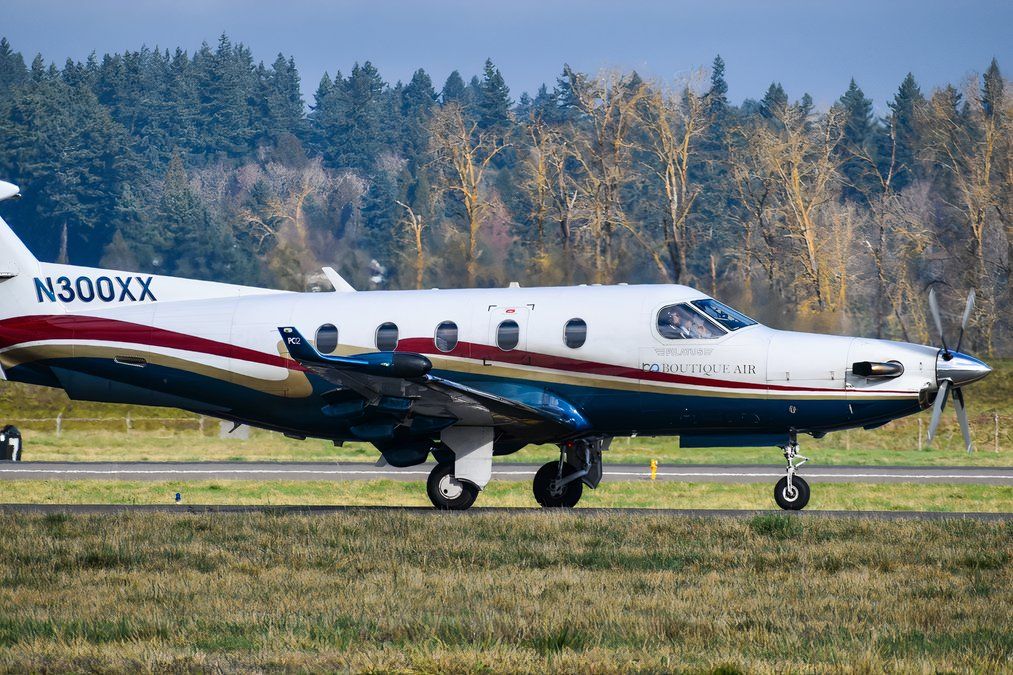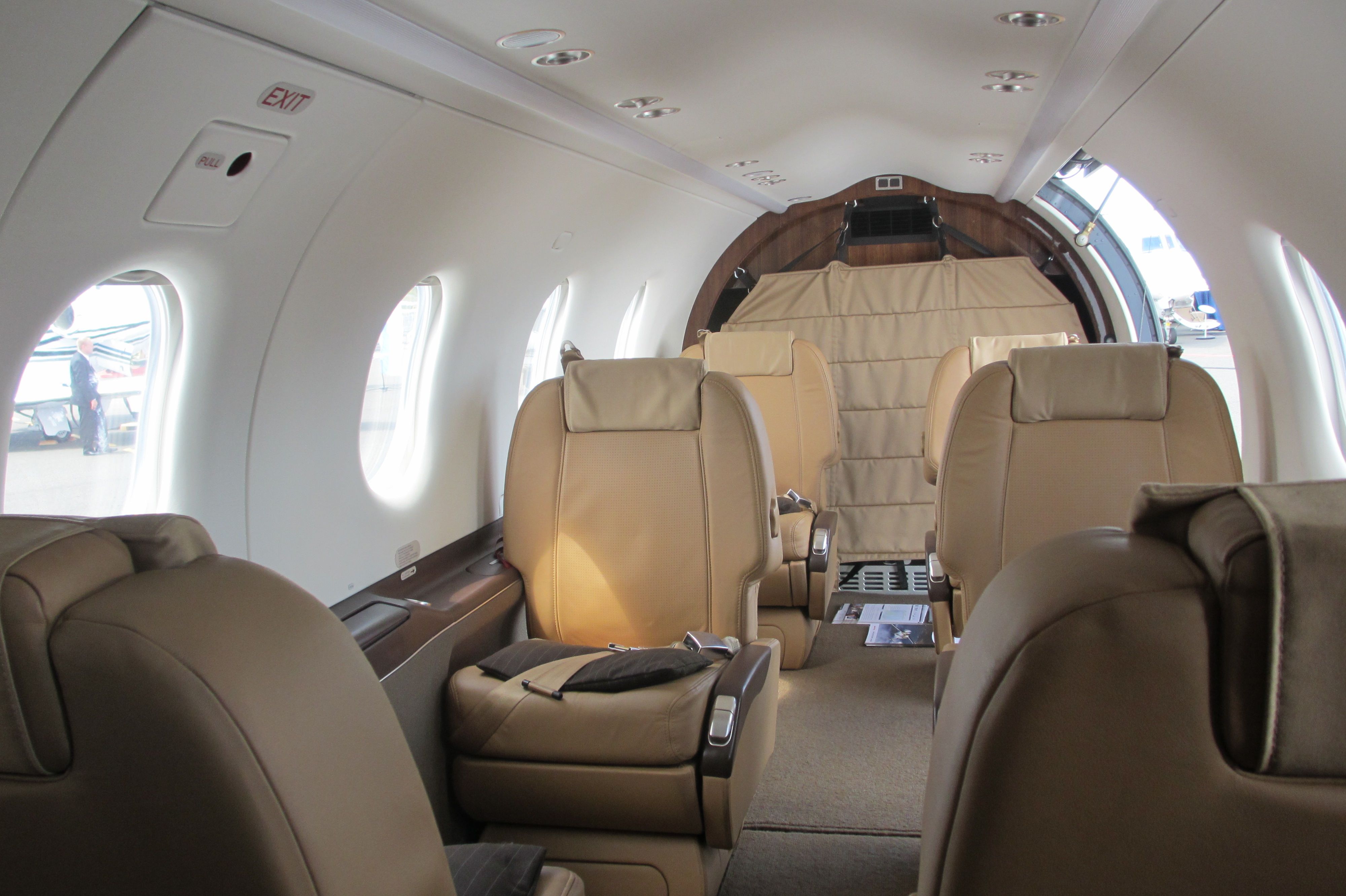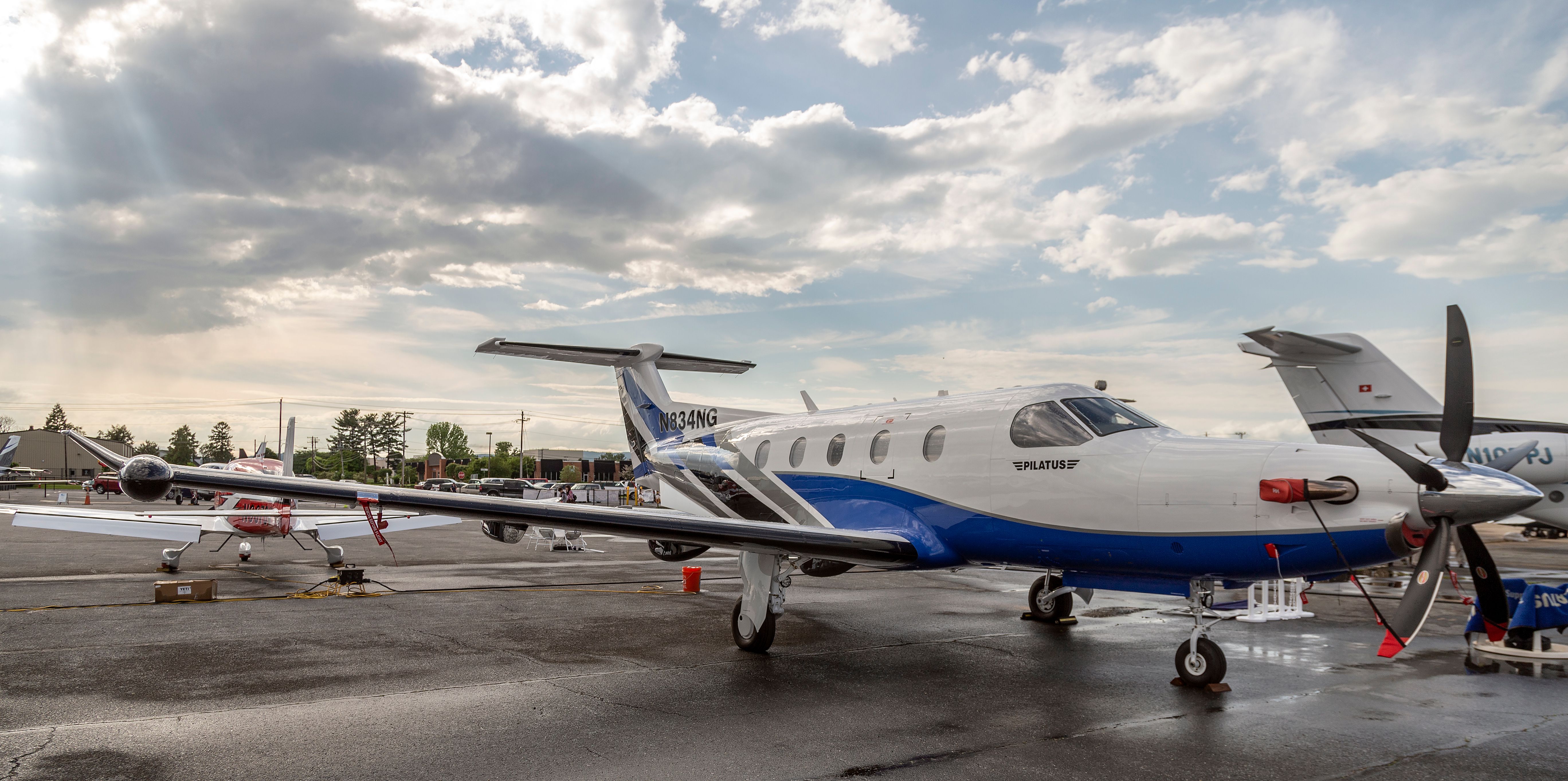The Pilatus PC-12 is a single turboprop-powered aircraft designed and developed by Pilatus Aircraft of Switzerland. The high-performance utility aircraft was designed for passenger and cargo transport. While the primary use of the PC-12 is with business customers, numerous government and law enforcement agencies utilize the aircraft. Since 1991, the manufacturer has delivered over 2,000 examples of the PC-12.
What began as a secret project
- Crew: Two
- Capacity: 6 to 9 passengers seats
- Length: 14.4 m (47 ft 3 in)
- Wingspan: 16.28 m (53 ft 5 in)
- Height: 4.26 m (14 ft 0 in)
- Max takeoff weight: 4,740 kg (10,450 lb)
- Maximum landing weight: 4,500 kg (9,921 lb)
- Maximum zero fuel weight: 4,100 kg (9,039 lb)
- Fuel capacity: 1,226 kg (2,703 lb) / 1,521 L (402 US gal; 335 imp gal)
- Powerplant: 1 × Pratt & Whitney Canada PT6A-67P turboprop engine, 890 kW (1,200 shp)
- Propellers: 5-bladed Hartzell Propeller composite, 2.67 m (8 ft 9 in) diameter composite constant-speed fully-feathering reversible propeller
Pilatus Aircraft had started working on the PC-12 design in the mid-1980s. However, it was not until October 1989 when the company announced the development of the PC-12 aircraft. At the time of its announcement at the National Business Aviation Association (NBAA) convention, assembly of the first prototype had already begun. It was designed to be the first single-engine aircraft to fly long distances and at high speeds.
Photo: Boutique Air
By May 1991, the manufacturer had completed two prototypes of the new turboprop, with the first flight taking place on May 31. Following the maiden flight, Pilatus went through several design iterations, particularly redesigning the wings. The crucial design factor allowed an increase in the wingspan and the addition of winglets, essentially increasing lift and improving fuel performance through a reduction in aerodynamic drag.
Despite Pilatus’ plan to receive the Swiss Civil Aviation certification within months of the type’s maiden flight, it took the company multiple years to get the design right. The Swiss Federal Office of Civil Aviation issued the type certification for the Pilatus PC-12 in March 1994. A few months later, in July, the type received its certification from the Federal Aviation Administration (FAA) in the United States.
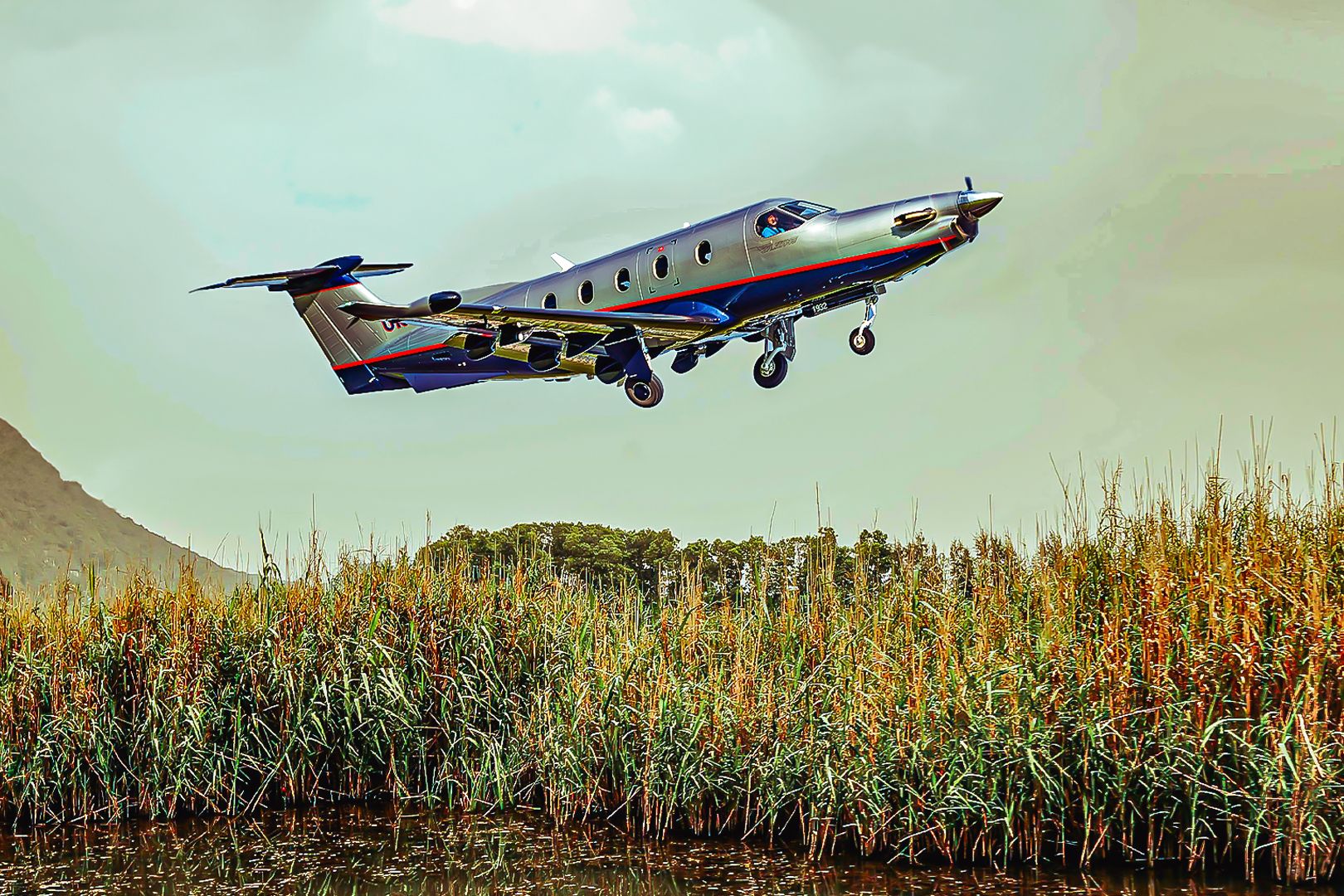
Related
5 Unique Features On The Pilatus PC-12
The Pilatus PC-12 is the Swiss army knife of the sky, with most of its buyers coming from North America.
Entry into service
- Cruise speed: 528 km/h (328 mph, 285 kn)
- Stall speed: 124 km/h (77 mph, 67 kn)
- Range: 3,417 km (2,123 mi, 1,845 NM) (HSC, VFR Reserves)
- Service ceiling: 9,144 m (30,000 ft)
- Rate of climb: 9.75 m/s (1,919 ft/min)
- Take-off distance over 50 ft (15 m): 793 m (2,602 ft)
- Landing distance over 50 ft (15 m): 661 m (2,169 ft)
- Fuel consumption: 250 L/h (66 gal/h; 55 imp gal/h) (915 km (569 mi; 494 NM) trip, including climb, cruise and descent, 491 km/h (305 mph; 265 kn) average block speed)
Pilatus PC-12 entered private aviation service in 1994, eventually bringing the latest technology design to the market. The manufacturer continued to improve the design, offering greater variety and diversity to its customers. Some initial (post-service entry) design improvements included:
- Increases maximum takeoff weight (MTOW)
- More powerful engines with new propellers
- New avionics
- Noise-reduction components and systems
- Increased cruises peed
- Increased range
- Improved interiors
- Upgrades to inflight entertainment systems
Notably, a number of global aerospace companies offer independent production and aftermarket enhancement packages for the Pilatus PC-12. Depending on the market and customers, these packages further enhance the aircraft’s operational reliability, safety, and comfort. According to Pilatus Aircraft,
“Versatile. Safe. Reliable. Proven. These are terms operators of PC-12s frequently used to describe their aircraft, and why so many people around the world trust the PC-12 to fly their families, employees, customers and critical cargo. Add comfort, quality, efficiency and time savings to the list of benefits for those who travel on the world’s most popular single-engine business aircraft.”

Related
The 6 Types Of Roles The Pilatus PC-12 Is Used For
The aircraft is used for a variety of operations across the world.
The Next-Generation versions
Pilatus Aircraft announced the NG version of the Pilatus PC-12 NG in 2006, featuring more powerful Pratt & Whitney PT6A engines with a greater cruise speed and improved takeoff and climb performance.
According to Pilatus Aircraft,
“The brand-new PC-12 NGX builds on the rock-solid, 1,700 aircraft foundation of its market-defining predecessor. In over ten million flight hours, the PC-12 has proven itself as the most versatile and valued business aircraft in the world. It’s an original that is impossible to copy. The PC-12 NGX takes this legacy to the next level of refinement, efficiency, and technological advancement. Fly at the head of the pack with the new PC-12 NGX.”
The PC-12NG is unique in its cabin comfort, accessibility, and customization for almost any civilian role. Pilatus states that each aircraft is individually crafted to exceed customer satisfaction. Even when it is compared to aircraft that are priced much higher, the PC-12NG proves to be a better performer in terms of its cabin comfort and class.
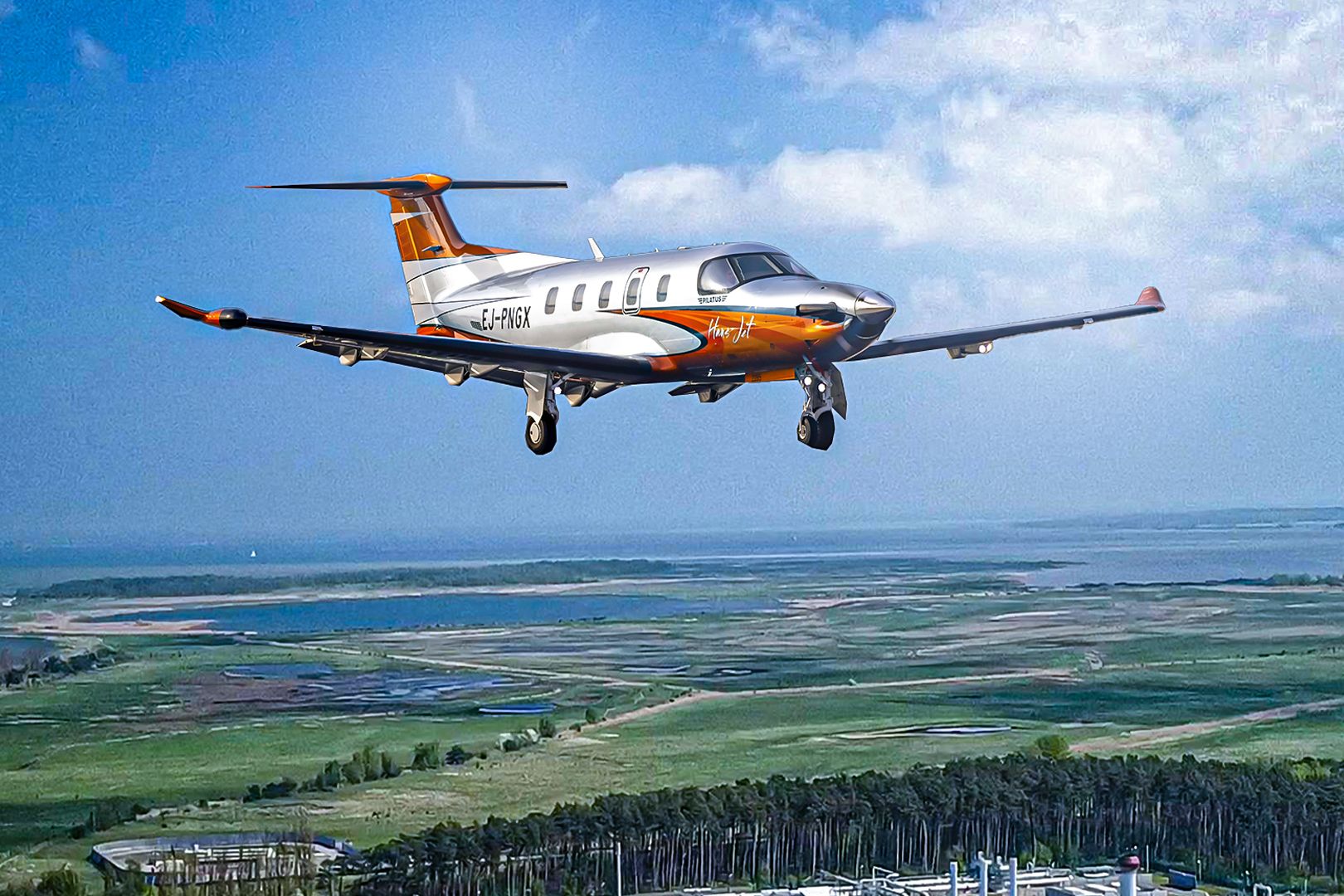
Related
What Was Changed On The Pilatus PC-12NG?
This upgraded variant brought a lot to the table.


